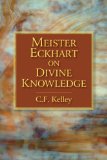Postmortem on Postmodern Art
Page 2 of 3 pages < 1 2 3 > - Full Article
In the case of Barnett Newman, Kuspit finds the aesthetical under siege in the anti-human insistence of Newman on certain primitive, almost animistic energies which he felt were the essence of all created phenomenon. For Newman, art involved a sort of return to a state before the fall of biblical man, before civilization and its accelerating madness. He experienced himself as defiantly alone in a profoundly inhospitable universe. He believed in a regression to some pre-human state of being which was essential to his notion of creativity, to his dependence on a kind of preternatural energy which could elevate him above the bleak mediocrity of industrial society. His was a sort of abstract paganism, in which only a mythic return to pre-human creative energies could justify the lonely howl of the artist, acutely separate and adrift in a universe of eternal night.
What Newman calls the “primal aesthetic root” is inseparable from “original man, shouting his consonants…in yells of awe and anger at his tragic state, at his own self-awareness and at his helplessness before the void…It was a primal act, full of the futility of self-recognition, acknowledging human isolation in an inhuman universe.
It is the unique gift of Kuspit to see behind these clever masks of mental seclusion; and to follow the devastating trends in art which have brought us at last to the point where we can no longer assert that art has any real import in our lives at all. What both Duchamp and Newman held in common was the bedrock notion that the aesthetic of art be confined to a strictly mental function; that indeed the separate, personal mind of the artist is the seminal truth in art, and that the actual process of making a work of art and the end-product itself are inferior to its isolated conception. That is to say, they each represent two different modes of a willful retreat into the personal labyrinth of human subjectivity, into a kind of gloomy mental isolation. Thus Newman and Duchamp exemplify what occurs when the dynamic energy of life and love are deliberately withdrawn from the actual human world of culture and art, when what Freud called the “death instinct” lays claim to our most passionate relational aspirations.
Kuspit brilliantly traces the downward-spiraling trends of this malevolent assault on aesthetics in art; and we arrive at last at the melancholy present, where commerce and the surface diversions of mere entertainment have almost entirely subsumed what was once known as fine art, or high art. The inspired art that can move us deeply, that can re-connect us with the healing realms of the great unconscious, can find no path into the shrill markets of postmodernism, where the exaltation of the vulgar, the banal, the commercially viable and the strictly ideological are the price of entry.
Andy Warhol most negatively embodies Kuspit’s most passionate concerns. With Andy Warhol we reach the final entropic hell of art in the western world. Warhol’s genius, if such it could be called, was in his cynical manipulation of the market mechanism in the artistic realm. He saw how the market, with its inhuman dynamic, could be used to exploit art in a mass culture driven by commercial advertising. It is with Warhol that the vivifying energy so critical to human culture is handed over to a passive, assembly-line mechanics, a pervasive dullness which can only appeal to the latent morbidity of the human ego. It is with Warhol’s cynical celebration of profit over inspiration that postmodern art becomes what Blake called “the mere art of guinea-mongering.”
By identifying art with money, Warhol devalues art while giving it the value of money—which is valueless unless it can be exchanged for something. Art loses spiritual cachet to gain social and economic cachet—the credibility, influence, and power that only money has in a consumer society. The artist was once thought of as sacred—he had a spark of God’s creativity in him—but Warhol’s artist is a businessman, profaning everything sacred and creative by putting a price on it, as Marx said. Warhol is a born salesman; with him art loses its mystery and openly becomes a commodity for sale. It seems to have no other identity than that of a commodity and no other value than the economic value it acquires by being sold. It also has the built-in obsolescence of every commodity. It inevitably loses excitement with time—after the fifteen minutes in which it was famous, and thus exciting, as Warhol said. Warhol’s art exploits the aura of glamour that surrounds material and social success, ignoring its existential cost. His art lacks existential depth; it is a social symptom with no existential resonance. He began his career as a commercial artist, and never stopped being one, ultimately making upscale commercial art—a deadpan art about commercial celebrities, including himself. He assimilated art into money, robbing it of spirituality and integrity. For Warhol, art is not a private religion that promises salvation, but a branch office of the religion of money. Warhol, like Duchamp, who was also obsessed with money, and also made deadpan art, is what the law calls a “corrupt persuader”, not to say panderer, toying with desire the way Duchamp played with intellect.
It is not so much that Kuspit is pointing out that the emperor has no clothes; rather it is that he understands that the emperor is a corpse; and that we are all of us participants in a collective pathology, a bizarre postart cult which is an ironic and exhausted consecration of death.
Page 2 of 3 pages < 1 2 3 > - Full Article
Page {current_page} of {total_pages} pages {pagination_links}
{/simplepaginate}









